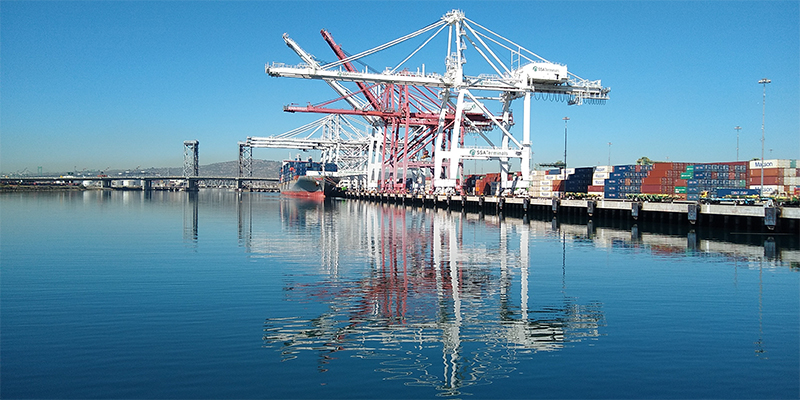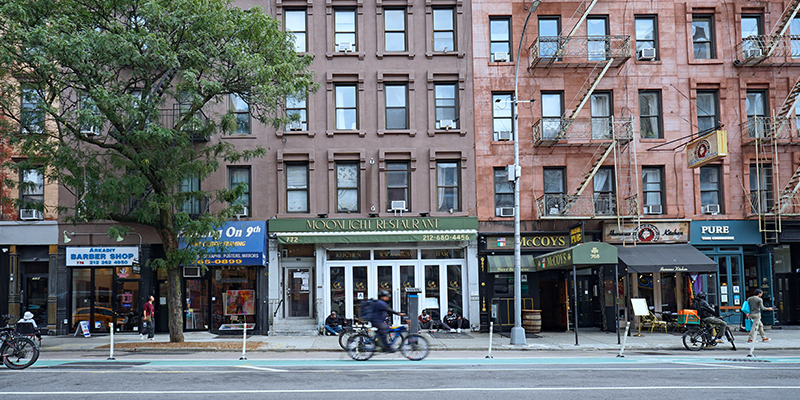The neighboring ports of Los Angeles and Long Beach have attracted substantial attention from the press, economists and industrial real estate developers as a surge in imports during the COVID-19 pandemic continues unabated. Increased shipments have translated to long lines of container ships anchored off the coast of Southern California and similar congestion within each port and at adjacent warehouses as the area’s logistical infrastructure operates near maximum capacity.
The Port of Long Beach – the second-busiest port in the U.S. after the neighboring Port of Los Angeles – continues to invest in initiatives to increase the port’s capacity and efficiency while also pursuing initiatives to decrease its environmental impact. Attendees at NAIOP’s I.CON West: The Industrial Conference this week in Long Beach, California, toured the port by boat to learn about port operations and how the port is evolving to meet tomorrow’s needs.
The Port of Long Beach handles nearly 1 in 5 of all containers that pass through U.S. ports, with approximately $200 billion of goods moving through the port’s terminals each year across the 75 shipping lines that service the port, according to Joel Perler, marketing manager – economic development, with the Port of Long Beach. 2021 set a new record in container volume, with 9.4 million TEUs (twenty-foot equivalent units, a measurement equal to the capacity of a 20-foot cargo container) passing through the port. As much as 75% of the cargo moving through the port is containerized, but the port also handles large volumes of raw goods such as lumber, petroleum, coke and soda ash. Initial signs point to another year of strong shipping volume, with 796,560 TEUs passing through the port last month, a new record for the month of February.
The port has been investing in a range of initiatives to help keep up with growing demand, with $4 billion spent on port infrastructure over the last 10 years and another $2 billion planned. The modernization of the port’s rail network is a top priority. On-dock rail – where cargo can be transferred directly from a ship to a train – currently moves 28% of the cargo entering the port, and the goal is to eventually move 50% of all cargo via on-dock rail in the coming years. This will alleviate some of the pressure on local trucking – which has proven to be a bottleneck during the pandemic – and will also decrease the port’s environmental footprint.
Recently completed infrastructure projects include a new $1.5 billion bridge that can accommodate taller ships and a higher volume of traffic as the highly automated Long Beach Container Terminal, also constructed at a cost of $1.5 billion. The new terminal accommodates driverless flatbed trucks, remotely operated electric cranes and a computer-controlled stacking system.
The Port of Long Beach also collaborates with the Port of Los Angeles on environmental initiatives such as the Clean Air Action Plan, which has invested in clean trucks, vessel pollution reduction and new technologies such as hybrid tugboats, resulting in a 90% reduction in diesel particulate emissions since 2005.
The port will also soon handle traffic from the final frontier. In 2021, SpaceX made an agreement with the port to lease a maritime terminal for rocket recovery operations. Elon Musk’s company took over a wharf that had been previously used for other aerospace purposes including satellite launches by Sea Launch.
As a recent NAIOP Research Foundation brief illustrates, growth in shipping volumes at major ports contributes substantially to demand for industrial space in adjacent markets. The Port of Long Beach’s investments in infrastructure, automation and environmental sustainability will support the continued development of industrial real estate in Southern California while also helping to reduce the logistics industry’s environmental footprint.
This post is brought to you by JLL, the social media and conference blog sponsor of NAIOP’s I.CON West 2022. Learn more about JLL at www.us.jll.com or www.jll.ca.









